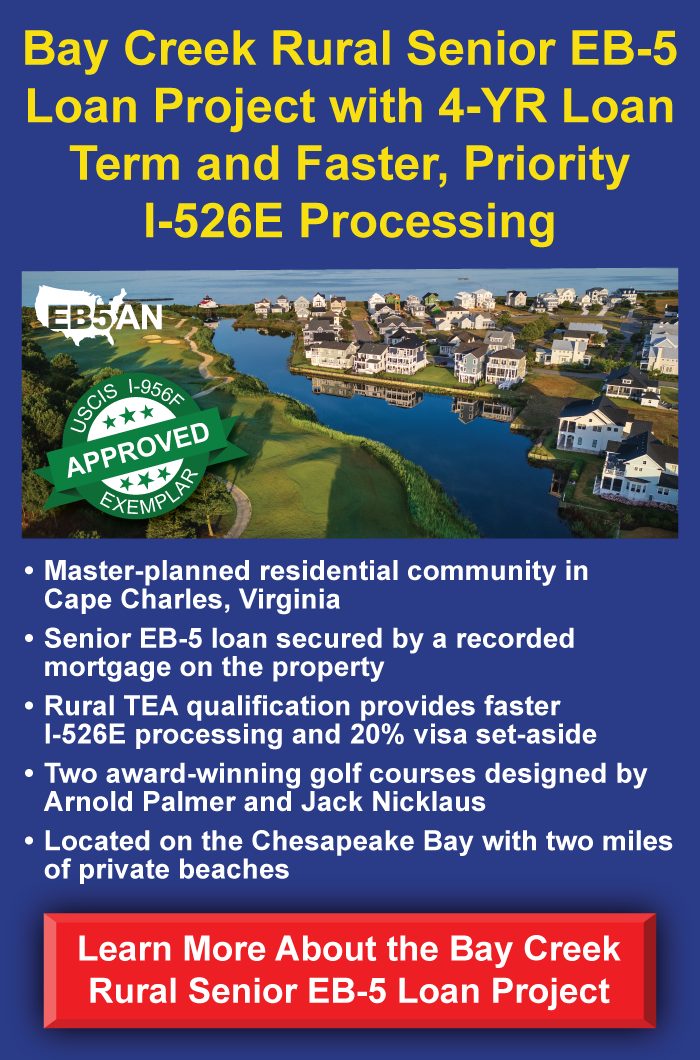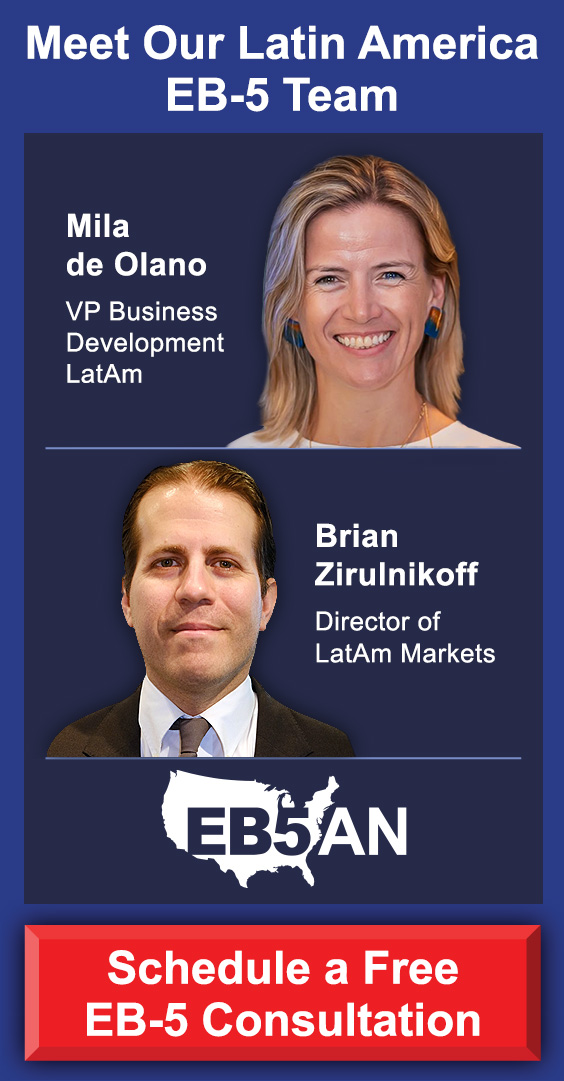The road to obtaining a U.S. Green Card through employment-based immigration has become a lengthy and complex journey, especially for Indian nationals. With over a million Indians vying for a Green Card, delays, backlogs, and uncertain waiting times are part and parcel of the process. For those considering employment-based visas, the issue of backlogs can seem daunting, but there is a potential solution: making an EB-5 investment in rural targeted employment area (TEA) projects.
In this article, we will explore the Green Card categories available to Indian nationals, with a specific focus on the issue of visa retrogression.
Why Backlogs Exist: A Brief Overview
The Current State of Employment-Based Visas for Indian Nationals
Rural TEA Projects: A Faster Path for Indian Investors
- Reduced Waiting Times
- Lower Investment Requirements
- Faster Adjustment of Status for Investors in the U.S.
EB5AN Can Assist You With Green Card Backlogs
Why Backlogs Exist: A Brief Overview
To understand the backlog, it’s important to know how the U.S. immigration system works. Employment-based immigration paths are typically subject to annual quotas. Only around 140,000 employment-based Green Cards are issued each year, with a certain number allocated to each category of applicants (EB-1, EB-2, EB-3, EB-5, etc.). Within these categories, countries are subject to per-country limits. India, due to its large population and high demand for U.S. Green Cards, faces significant delays because the country often reaches the annual limit for the EB-2 and EB-3 categories long before the fiscal year ends.
This issue has been compounded by a series of political and policy changes, especially recently. One of the key changes was the recent curtailment of citizenship by birth for children of legal immigrants, which might have the effect of reducing the future supply of U.S. citizens born in the U.S. to legal immigrants. This move is expected to disproportionately impact thousands of Indians waiting for Green Cards, particularly those who had children born in the U.S. while waiting for their Green Card approval. As a result, the backlog for Indian nationals is expected to become even more extensive, and waiting times to become significantly longer.
The Current State of Employment-Based Visas for Indian Nationals
As of recent Visa Bulletins, the backlog for Indian nationals under the EB-2 and EB-3 categories has reached frustrating levels, resulting in waits of over a decade. The U.S. State Department’s February 2025 Visa Bulletin, for example, indicated a modest two-week advancement for Indian EB-2 and EB-3 applicants. While this is a small improvement, the wait for Indian nationals in these categories is still expected to stretch for many years to come. Given that some applicants are still facing wait times in excess of 10 years, this minimal advancement is unlikely to provide immediate relief.
On the other hand, India is one of the largest contributors to the EB-5 Immigrant Investor Program, where individuals can obtain a U.S. Green Card by investing in job-creating projects. Backlogs in the legacy “unreserved” category have historically been a major challenge for Indian EB-5 applicants due to this demand, however, the EB-5 Reform and Integrity Act of 2022 (RIA) solved this issue for new applicants by introducing reserved set-aside visa categories.
Thanks to the provisions introduced by the RIA, Indian Green Card applicants managed to become permanent residents of the United States in record time.
Now, however, some set-aside visa categories are also facing upcoming backlogs for Indian investors, so they need to act sooner rather than later if they would like to successfully reserve their spot in the EB-5 Green Card queue without additional delays.
Rural TEA Projects: A Faster Path for Indian Investors
As of February 2025, the fastest route for Indian nationals to obtain a U.S. Green Card through employment-based categories remains the EB-5 rural TEA investment. This option requires investing in rural projects designated by the United States Citizenship and Immigration Services (USCIS), offering faster processing times and fewer delays than other EB-5 categories. Even if retrogression occurs, it is expected to be less severe and shorter than in other categories.
This is part of the reason why rural TEA projects have gained significant attention as a faster route to obtaining U.S. permanent residency. Here are some key reasons why Indian nationals may want to consider this route:
Reduced Waiting Times
As noted, rural EB-5 applications generally have shorter waiting times than other categories due to the RIA’s priority processing provision. This allows applicants to receive their Green Cards faster than those in other EB-5 categories. Additionally, more visas are allocated to rural projects than to other set-aside categories, making any future backlog in this category less likely to be prolonged.
Lower Investment Requirements
The minimum investment amount for EB-5 TEA projects is $800,000, compared to $1,050,000 for non-TEA areas. This can make the program more accessible to investors who may be hesitant to commit a larger sum.
Faster Adjustment of Status for Investors in the U.S.
One of the major benefits of the EB-5 program is the ability to apply for adjustment of status concurrently. If you are already in the United States on a valid nonimmigrant visa (such as an H-1B, L-1, or F-1), you can file for adjustment of status as long as a visa is immediately available to you, which allows you to change your status to a lawful permanent resident without having to leave the country. This is particularly beneficial for Indian nationals who are already in the U.S. on nonimmigrant visas and want to avoid waiting for Form I-526E approval and consular processing. Applying for adjustment of status also changes your immigration status to “pending adjustment,” which means you remain legal even if your other visas expire.
Employment Authorization Document
Along with your adjustment of status application, you are also eligible to apply for an Employment Authorization Document (EAD). The EAD allows you to work legally anywhere and for any employer, including yourself, in the U.S. while waiting for your Green Card to be approved. This is a significant advantage, especially for professionals and entrepreneurs who want to continue working without interruptions during the immigration process.
Advance Parole
In addition to the EAD, applicants who file for adjustment of status can also apply for Advance Parole (AP). Advance Parole permits you to travel outside the U.S. while your Green Card application is pending without jeopardizing your application. For Indian nationals who may need to travel back to India or other countries during the processing period, this can provide significant peace of mind. Without AP, leaving the U.S. while an adjustment of status application is pending could result in the abandonment of your Green Card application.
EB5AN Can Assist You With Green Card Backlogs
For Indian nationals seeking a U.S. Green Card, the employment-based Green Card backlogs remain a significant hurdle. The long waiting times, compounded by recent policy changes, have made it increasingly difficult for Indian nationals to secure permanent residency in the U.S.
However, investing in rural TEAs through the EB-5 program provides a viable solution to this problem. By investing in rural areas, Indian nationals can bypass most of these delays and obtain their Green Cards more quickly. Working with industry experts can help investors manage this process effectively.
EB5AN has helped more than 2,300 families from 70+ countries become lawful permanent residents of the United States. Our team has more than a decade of experience and offers clients first-rate, low-risk EB-5 regional center projects with a 100% USCIS project approval rate.
If you would like to know more about your Green Card options, book a free call with our expert team today.










